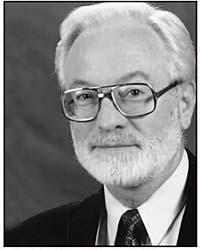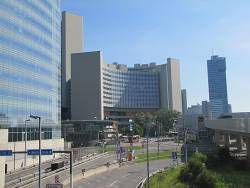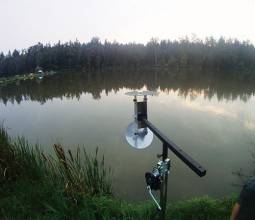 Tom Stansell
Tom StansellAn International Committee on GNSS (ICG) Interoperability Workshop April 25–27, in Honolulu, Hawaii, is seeking participation by designers and manufacturers of GNSS user equipment. The workshop, convened by ICG Working Group A (WG-A) on Compatibility and Interoperability, immediately follows the ION Pacific PNT conference at the Waikiki Beach Marriott Resort & Spa.
An International Committee on GNSS (ICG) Interoperability Workshop April 25–27, in Honolulu, Hawaii, is seeking participation by designers and manufacturers of GNSS user equipment. The workshop, convened by ICG Working Group A (WG-A) on Compatibility and Interoperability, immediately follows the ION Pacific PNT conference at the Waikiki Beach Marriott Resort & Spa.
Tom Stansell, a well-known GNSS industry consultant, has been engaged by the U.S. Department of State to organize the Friday April 26 meeting, which seeks to encourage better interoperability of emerging modernized signals.
According to Stansell, the objective of the meeting is to allow those who design and build GNSS receivers to offer their best advice to signal providers (BeiDou, Galileo, GLONASS, GPS, QZSS, IRNSS, etc.) about how to achieve optimum interoperability benefits for their customers.
He says, “I expect each speaker to say: ‘We will use whatever you provide, BUT this is what we prefer.” He adds that providers who have not finally decided on new signals will greatly appreciate experts’ recommendations on the subject.
The objective is for those who design and build GNSS receivers to offer their best advice to Signal Providers (BeiDou, Galileo, GLONASS, GPS, QZSS, IRNSS, etc.) about how to achieve optimum interoperability benefits for their customers. I expect each speaker to say: “We will use whatever you provide, BUT this is what we prefer.” Providers who have not finally decided on new signals will greatly appreciate your recommendations.
Some of the issues to be addressed include:
· increase of noise floor in GNSS receivers resulting from additional signals from more satellites in the same band
· common or offset center frequencies
· common signal spectra in each band
· prospects for increase in elevation limits to reduce multipath error as well as ionospheric and tropospheric refraction error
· international clock and geodesy references
· ICAO acceptance of new signals for international aviation
· transmitter bandwidth to enable better multipath
· mitigation and code measurement accuracy
· another common open signal for wide area, high-precision, phase-based navigation
· potential to use existing or planned spare capacity in open service or SBAS messages to increase multi-GNSS interoperability.
Selected speakers will address four types of GNSS receivers:
1. High Precision Code, for products with sub-decimeter accuracy that use wide area correction signals such as from OmniSTAR or StarFire.
2. High Precision Phase, for products with sub-cm accuracy that use terrestrial correction signals to resolve carrier phase ambiguities.
3. Medium Precision, for products with sub-50-centimeter accuracy, which often are single-frequency receivers using local correction signals.
4. Consumer Applications, for chipsets that are embedded in consumer products.
Background documents on the subject — particularly files titled “Interoperability Questions.pdf” and “GNSS Modernization Background-Handouts.pdf” — can be downloaded here.




